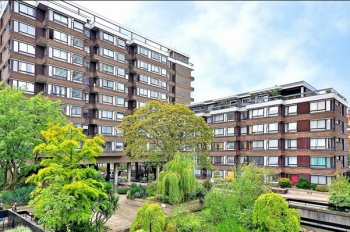Rise in number of domestic staff working in Mayfair

Mayfair estate agentsWetherell report that there has been a boom in domestic staff in Mayfair.
According to data compiled by the company, homes in Mayfair now employ more domestic staff than they did in the Georgian and Victorian eras. However, unlike their Victorian counterparts, 21st century Mayfair households require very different types of domestic support and are increasingly providing their staff with high quality accommodation and flexible working conditions.
Wetherell’s estimate that with more high-net-worth individuals buying property in Mayfair, around 80 per cent of the private apartment owners - some 3,100 homes - and 90 per cent of house owners - around 350 houses - in Mayfair employ professional and domestic staff.
Peter Wetherell, Managing Director of Wetherell, commented: “According to the 1,790 household survey, less than 20 per cent of residents of Mayfair were wealthy. The figure today is about 70 per cent who have substantial wealth, and the population of Mayfair has trebled. Modern household staff have different roles from the Georgian and Victoria era.”
Mayfair is home to some of the most expensive properties in London, with residential values edging ever closer to £4,500 per square foot, with further capital growth anticipated.
A spokesperson at Hyde Park estate agentsNapier Watt, which specialises in selling homes across prime London areas, including Mayfair, commented: “Mayfair is one of the safest places to invest in property in the UK. Insatiable demand coupled with an ever-growing housing shortage means that the Mayfair property market continues to go from strength to strength.”
Home prices are soaring in London, led by premier areas such as Mayfair, where average prices far outstrip the average price of a property in London, which stood at £375,795 in April, up 6.2 per cent year-on-year. The monthly increase from March was 1.4 per cent, according to the Land Registry.
The most expensive average house price in any London borough was in Kensington and Chelsea at £1.1 million, followed by the City of Westminster, which includes Mayfair, at almost £800,000.
Many economists expect the government’s flagship Help to Buy scheme, which provides an interest-free loan of 20 per cent of the purchase price for five years, to further fuel greater capital growth, particularly in London and the south-east. Homebuyers still need a five per cent deposit, but this additional loan should enable them to buy a property. Help to Buy mortgages can be used on properties valued up to £600,000; the scheme is available in England only.
Gráinne Gilmore, head of UK Residential Research at Knight Frank, said: “Housebuilders are optimistic that development volumes will rise this year, and this view has been supported by their strong start to the year, with many reporting a surge in buyer activity after the start of the Government’s Help to Buy Scheme. Such an uplift in volumes is welcome, but the large demand and supply gap in housing is unlikely to be bridged any time soon.”
The ‘Help to Buy’ scheme has already started to have a big impact on the market, helping to push demand for property, particularly new homes, higher.
According to the latest RICS residential market survey, new buyer enquiries in April rose to their highest level in over three years, with 25 per cent more chartered surveyors reporting that demand for property rose rather than fell.
Peter Bolton King, RICS Global Residential Director, commented: “It is encouraging to see government initiatives are having an impact on the property market. Help to Buy in combination with the Funding for Lending scheme appears to be giving the market a shot in the arm. Thankfully, sales are expected to pick up over the coming months, albeit from historically low levels.”
The Help to Buyinitiative, which was announced in the Chancellor's Budget in March, has helped to stimulate activity in the housing market, with many signs that transactions and prices will increase further, led by prime areas like Mayfair.
